Top 10 Forex Indicators That Every Trader Should Know
Indicators are considered essential when trading in the forex market. Several forex traders use these indicators daily, which helps them understand when they can buy or sell in the forex market. These indicators are known as an important part of technical analysis, and every technical or fundamental analyst should be aware of these indicators. Here are the top 10 forex indicators that every trader should know:
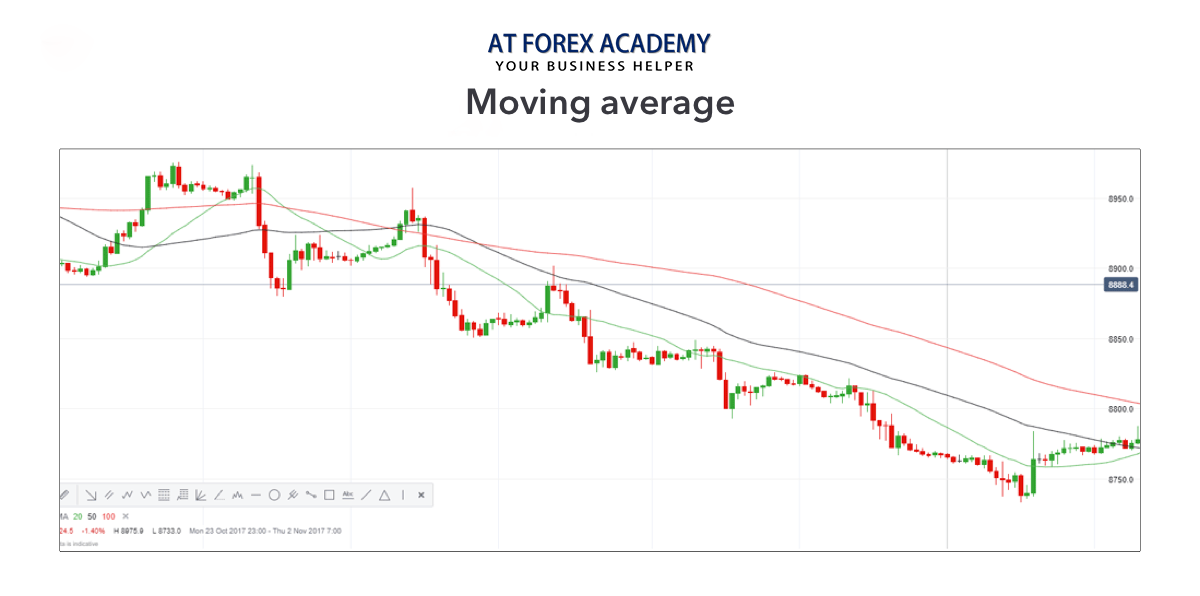
The MA – or ‘simple moving average’ (SMA) – is an indicator used to identify the direction of a current price trend, without the interference of shorter-term price spikes. The MA indicator combines price points of a financial instrument over a specified time frame and divides it by the number of data points to present a single trend line. The data used depends on the length of the MA. For example, a 200-day MA requires 200 days of data. By using the MA indicator, you can study levels of support and resistance and see previous price action (the history of the market). This means you can also determine possible future patterns.
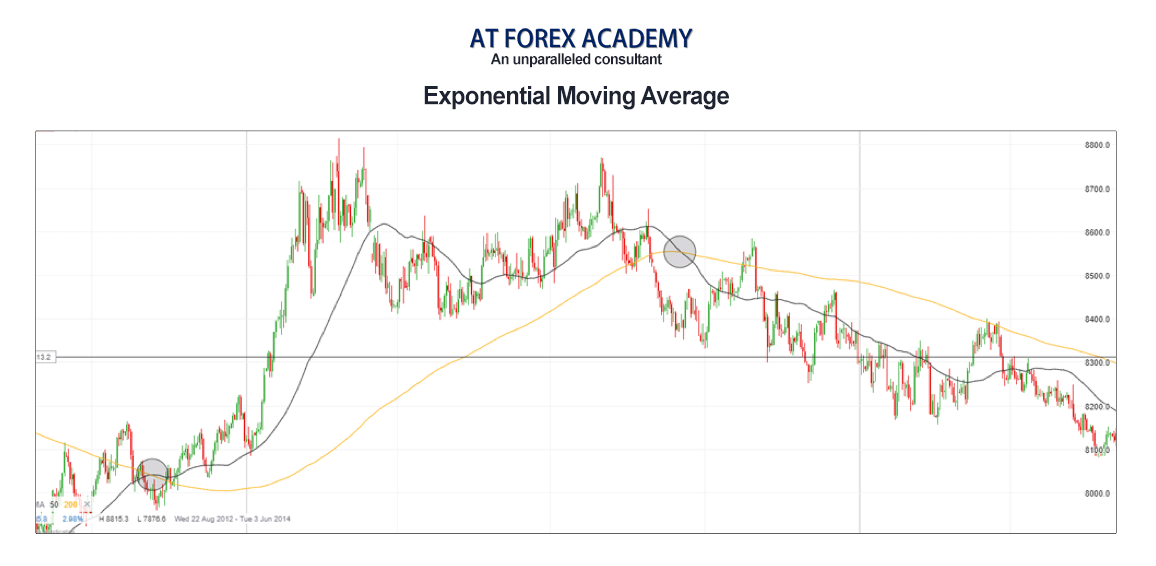
EMA is another form of moving average. Unlike the SMA, it places a greater weight
on recent data points, making data more responsive to new information. When used
with other indicators, EMAs can help traders confirm significant market moves
and gauge their legitimacy.
The most popular exponential moving averages are 12- and 26-day EMAs for
short-term averages, whereas the 50- and 200-day EMAs are used as long-term
trend indicators.
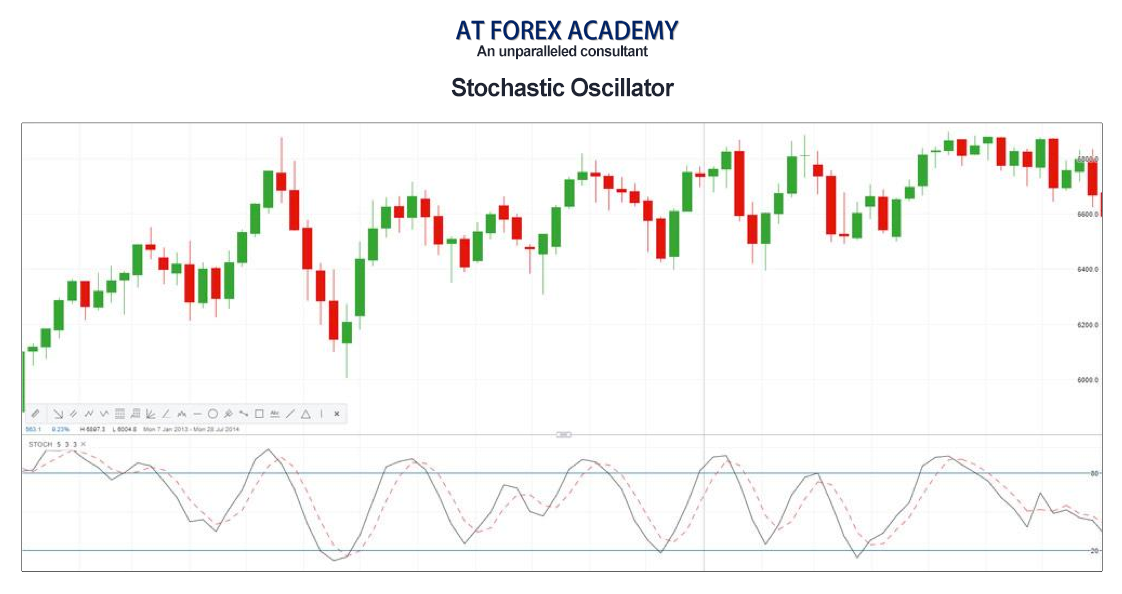
A stochastic oscillator is an indicator that compares a specific closing price of an asset to a range of its prices over time – showing momentum and trend strength. It uses a scale of 0 to 100. A reading below 20 generally represents an oversold market and a reading above 80 an overbought market. However, if a strong trend is present, a correction or rally will not necessarily ensue.
.png)
MACD is an indicator that detects changes in momentum by comparing two moving
averages. It can help traders identify possible buy and sell opportunities
around support and resistance levels.
‘Convergence’ means that two moving averages are coming together, while
‘divergence’ means that they’re moving away from each other. If moving averages
are converging, it means momentum is decreasing, whereas if the moving averages
are diverging, momentum is increasing.
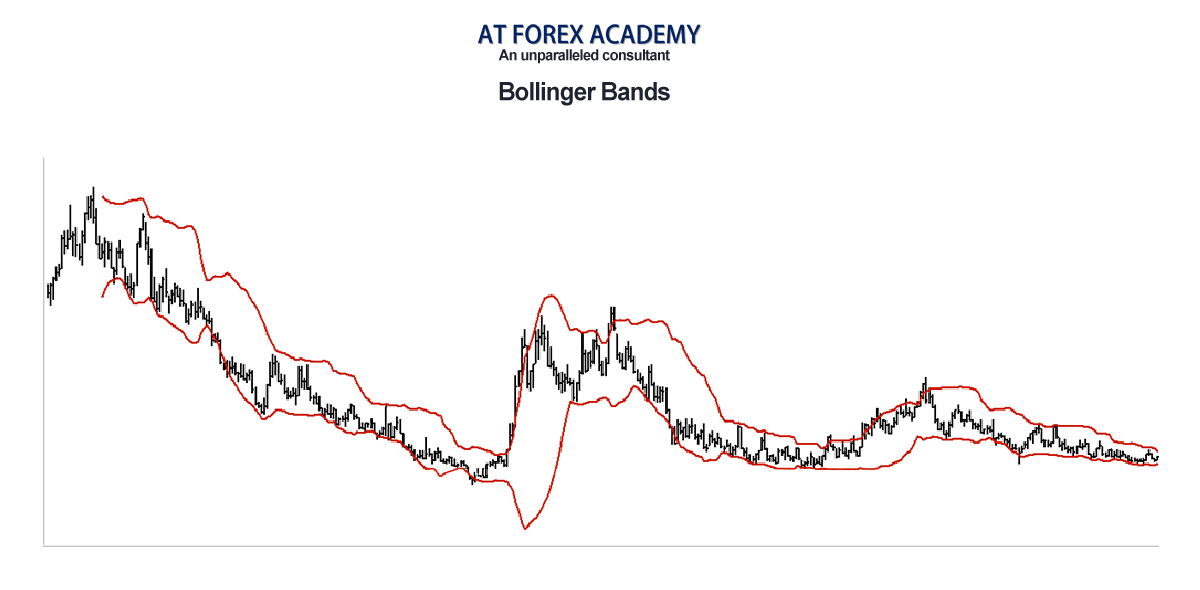
A Bollinger band is an indicator that provides a range within which the price of
an asset typically trades. The width of the band increases and decreases to
reflect recent volatility. The closer the bands are to each other – or the
‘narrower’ they are – the lower the perceived volatility of the financial
instrument. The wider the bands, the higher the perceived volatility.
Bollinger bands are useful for recognising when an asset is trading outside of
its usual levels, and are used mostly as a method to predict long-term price
movements. When a price continually moves outside the upper parameters of the
band, it could be overbought, and when it moves below the lower band, it could
be oversold.
.png)
RSI is mostly used to help traders identify momentum, market conditions and
warning signals for dangerous price movements. RSI is expressed as a figure
between 0 and 100. An asset around the 70 level is often considered overbought,
while an asset at or near 30 is often considered oversold.
An overbought signal suggests that short-term gains may be reaching a point of
maturity and assets may be in for a price correction. In contrast, an oversold
signal could mean that short-term declines are reaching maturity and assets may
be in for a rally.
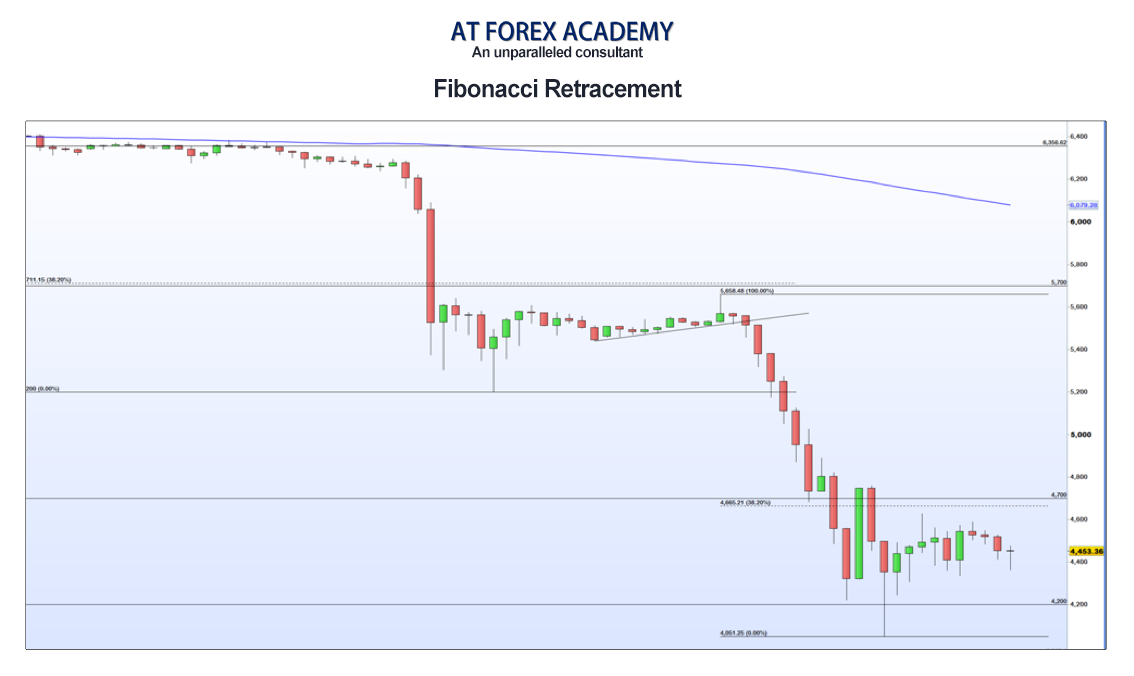
Fibonacci retracement is an indicator that can pinpoint the degree to which a
market will move against its current trend. A retracement is when the market
experiences a temporary dip – it is also known as a pullback.
Traders who think the market is about to make a move often use Fibonacci
retracement to confirm this. This is because it helps to identify possible
levels of support and resistance, which could indicate an upward or downward
trend. Because traders can identify levels of support and resistance with this
indicator, it can help them decide where to apply stops and limits, or when to
open and close their positions.
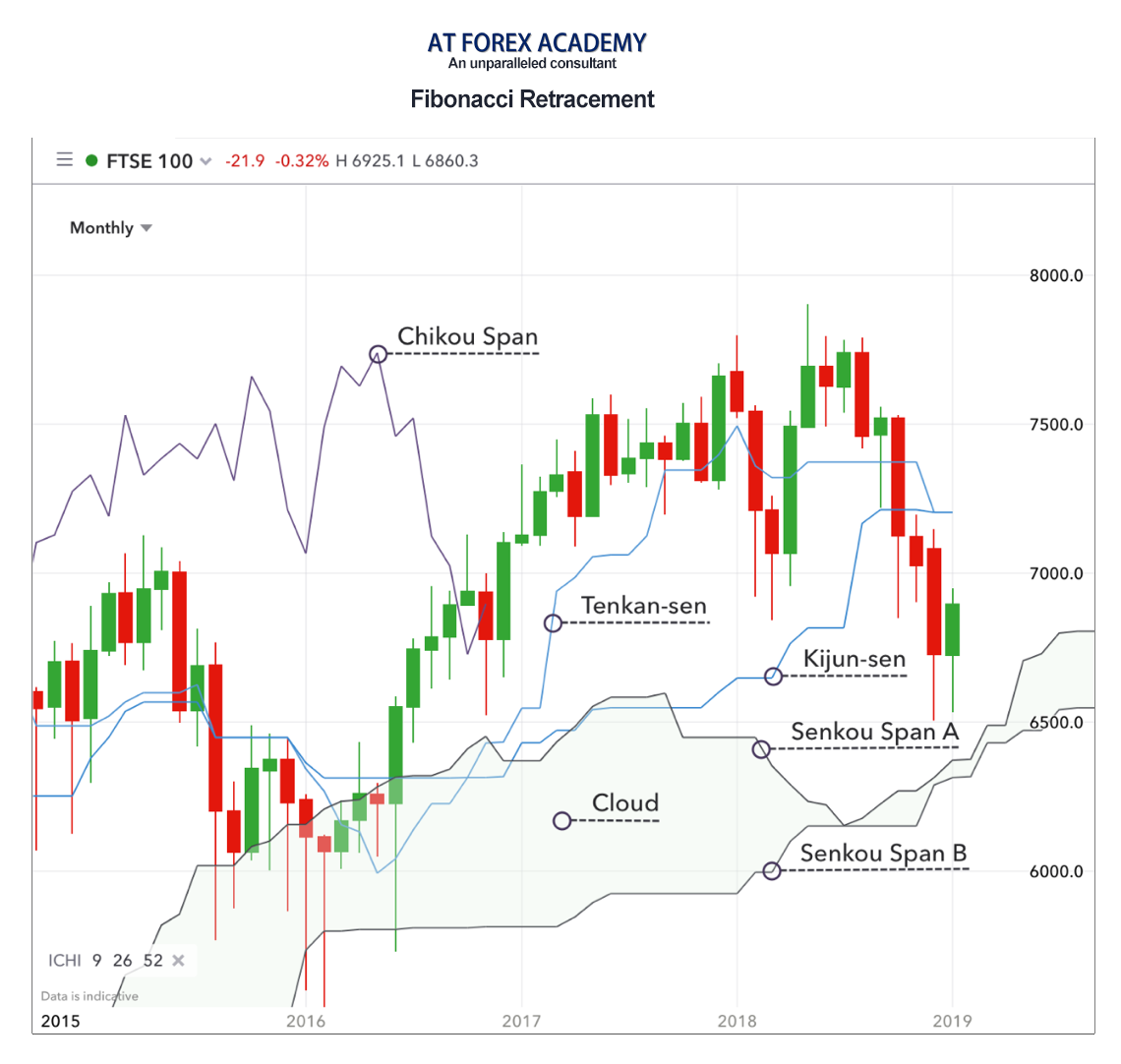
The Ichimoku Cloud, like many other technical indicators, identifies support and
resistance levels. However, it also estimates price momentum and provides
traders with signals to help them with their decision-making. The translation of
‘Ichimoku’ is ‘one-look equilibrium chart’ – which is exactly why this indicator
is used by traders who need a lot of information from one chart.
In a nutshell, it identifies market trends, showing current support and
resistance levels, and also forecasting future levels.
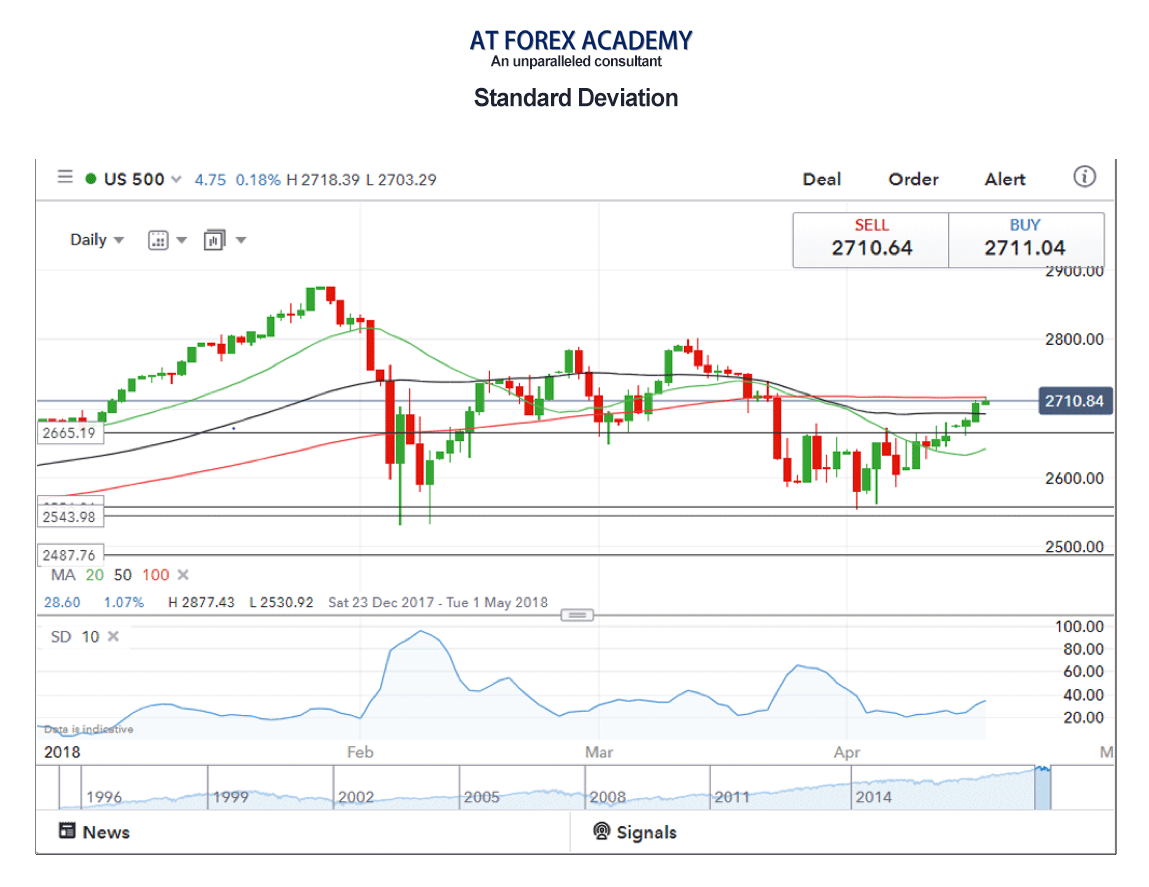
Standard deviation is an indicator that helps traders measure the size of price
moves. Consequently, they can identify how likely volatility is to affect the
price in the future. It cannot predict whether the price will go up or down,
only that it will be affected by volatility.
Standard deviation compares current price movements to historical price
movements. Many traders believe that big price moves follow small price moves,
and small price moves follow big price moves.
.png)
The ADX illustrates the strength of a price trend. It works on a scale of 0 to
100, where a reading of more than 25 is considered a strong trend, and a number
below 25 is considered a drift. Traders can use this information to gather
whether an upward or downward trend is likely to continue.
ADX is normally based on a moving average of the price range over 14 days,
depending on the frequency that traders prefer. Note that ADX never shows how a
price trend might develop, it simply indicates the strength of the trend. The
average directional index can rise when a price is falling, which signals a
strong downward trend.
